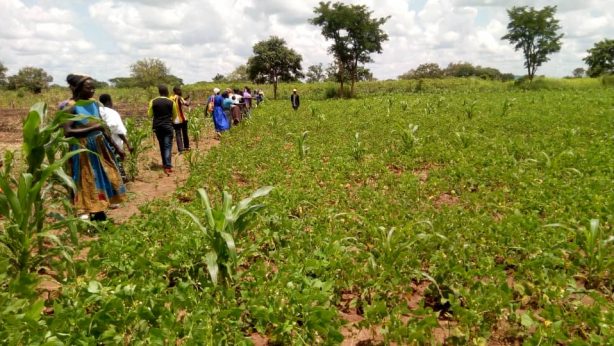A bird’s eye view into handle’s activities: Making a U-turn to end violence against women

For over 2 years now HANDLE Uganda has done the very necessary work of creating and testing theories, strategies, and techniques for working with men to end violence against women.

Continuous examination of our work and its effectiveness has taught us that confronting a problem as entrenched as violence against women requires critical analysis of existing standards, creative thinking, and the courage to introduce new paradigms. Our goal is premised on contributing to a peaceful society where poor and vulnerable women and girls, men and boys are aware and enjoy their full human rights. With this in mind, HANDLE Uganda undertook a joint venture in partnership with OMOANA and Nwoya district Local Government and engaged in comprehensive prevention and response to gender based violence in the Nwoya district.

In this partnership, HANDLE provided technical resources that supported the implementation of activities towards prevention of the GBV cases within the community. The new-standard approach of working with men as Role Model has been a better approach to end GBV. Our experience led us to believe that community-based strategies of identifying and educating more male allies strengthened collaborative ties between men and women.

With this mind, HANDLE Uganda managed to address the norms of patriarchy that affected how men and boys see themselves in relation to women and girls, shaping their behavior, and the behavior they expect from others. Hence the intervention also involved interaction with children to promote respectful relationships and gender equality. At community level Role Model Men (RMM) act a “best bet” for faster, sustained progress on preventing and eradicating discrimination basing on sex.
The intervention therefore deconstructed the normalized practices deeply rooted on inequalities between men and women. HANDLE Uganda placed a strong focus on prevention through the promotion of gender equality, and women’s empowerment. It also means making the home and public spaces safer for women and girls, ensuring women’s economic autonomy and security, and increasing women’s participation and decision-making powers in the home and relationships, as well as in Working with men and boys accelerated progress in reducing violence against women and girls. These progress were based on many analysis, strategic planning and stakeholders mapping formed a basic for community transformation.


Putting theory into practice
The use of the Role Model Men invites men to examine their beliefs and behaviors in a way that gets to the very core of what it means to be a man. To authentically and compassionately challenge other men, we have to be willing to excavate our own belief systems and face the ways that they might be destructive to ourselves and to women.
This is done not to shame fellow men, punish ourselves, or impress women with our sensitivity. We do it to free ourselves and to clear a path for other men to copy and paste in their family and also challenge ourselves and other men with authority and compassion. We are also the work.

HANDLE’s approach of using men as agent of change, men as equal partner to women and men as client left both people of concerned and GBV stakeholders with guiding principles and tested practices for community transformation. We believe that our strategies and processes in planning and implementing these programs can aid anyone seeking to take the work of ending violence against women. And with observation, the involvement of men in violence prevention work was looked at as an effective ways to collaborate with women advocates. Finally, working with community for community gave us a learning experience that the reality of gender role and discrimination cannot be ignored when developing strategies for increasing the safety of vulnerable women and girls and men and boys.


